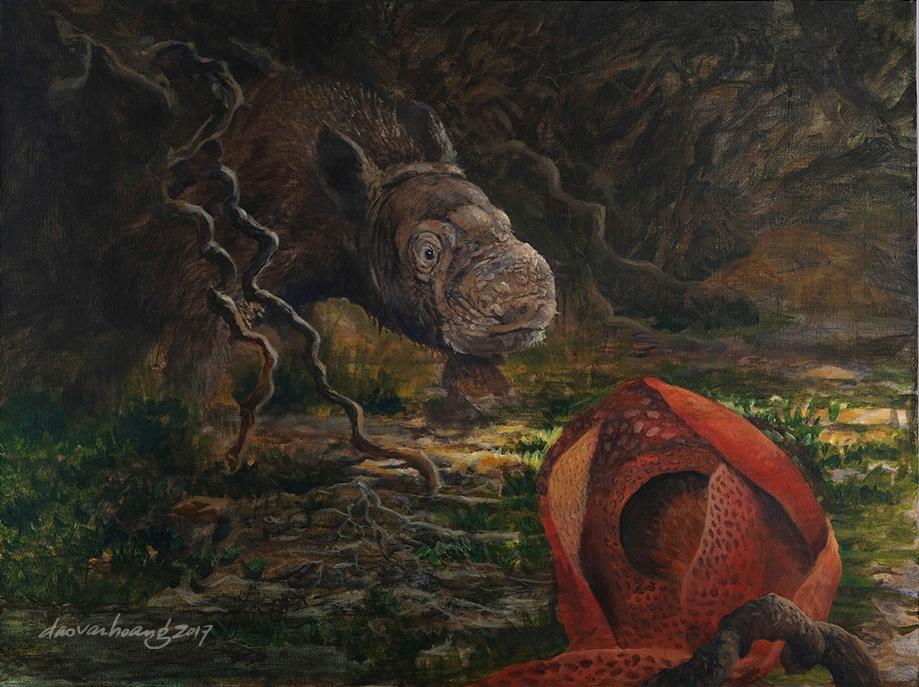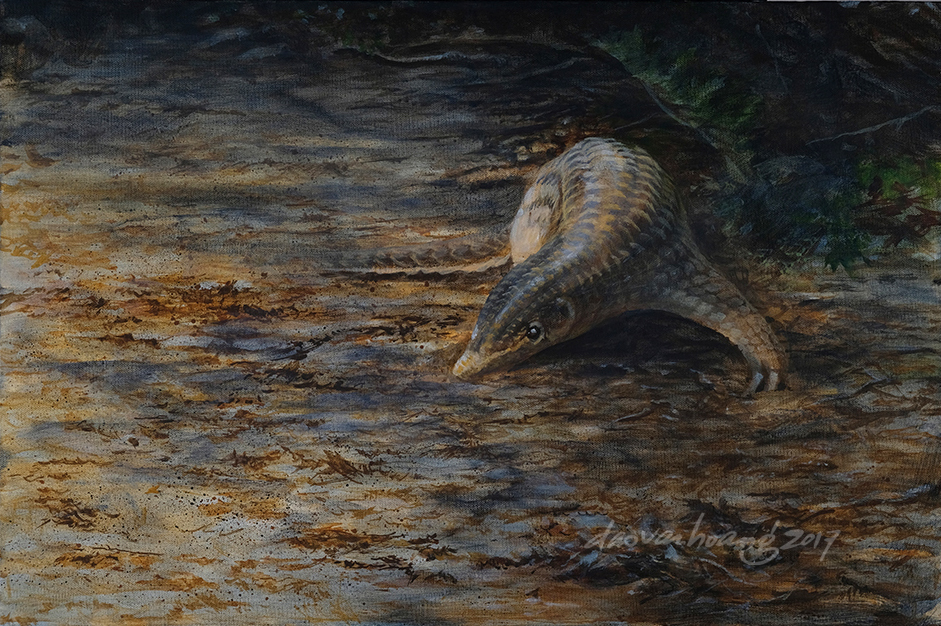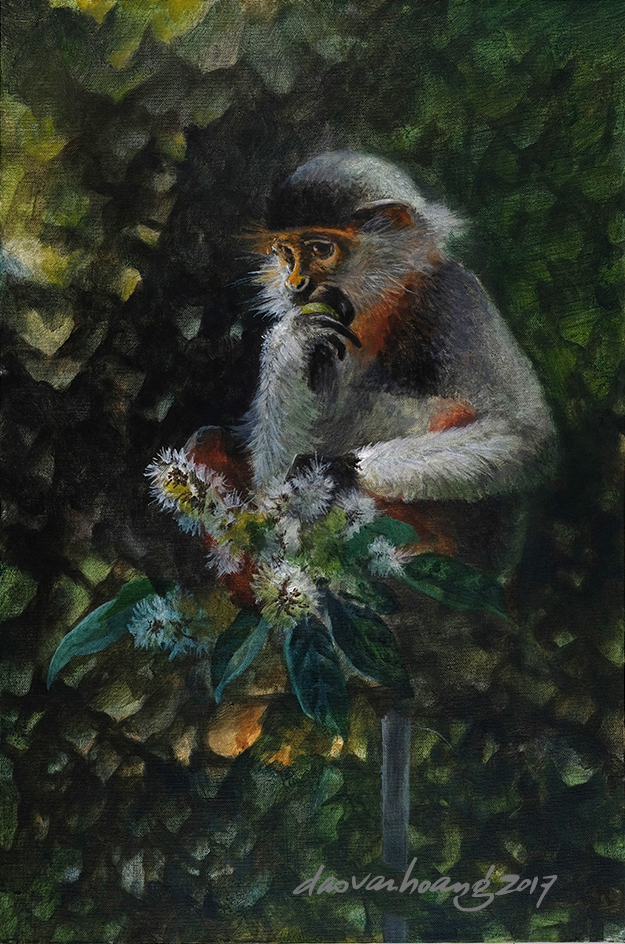
Title “Mummy’s tail” - Leopard (Panthera pardus)
It is quite hard to create an original painting of the leopard. Great wildlife artists like Robert Bateman or John Seerey Lester have long come up with amazing compositions and mysterious jungle mood portraying this fascinating cat. I’m quite pleased with the idea of focusing on the kitten instead of the adult, even though the obvious and immediate point of attention was the adult’s contrasting tail.

Title “Off balance” - Giant panda (Ailuropoda melanoleuca)
The Giant panda is not necessarily a tropical animal, therefore doesn’t really fit in a meeting on tropical biology. I was thinking of including it in the series as a courtesy on the host country, where it is endemic. It’s also just so enjoyable painting its fur, white on white and black on black, and putting the snow here and there. Original available

Title “Giant” - Sumatran rhino and rafflesia
(Dicerorhinus.sumatrensis & Rafflesia arnoldii)
(Dicerorhinus.sumatrensis & Rafflesia arnoldii)
I have been studying the size of a baby sumatran rhino and the diameter of Raffesia arnoldii, where their range is supposed to overlap, and came up wih this proportion in the painting. Sumatran rhino, unlike their javan, indian and african cousins, have fur on its body and is quite recognizable, although the head could be mistaken with that of the hippo.

Title “Saola calf” - Saola (Pseudoryx nghetinhensis)
Another challenge for me. Very few scientists has ever seen this eluside bovid, let alone witness young one, or even cub like this one. I was peculating the size of its head, its eyes, ears... basing a bit on the anatomy of the muntjac, the cow and the wild goat. I wish one day it is well protected and I have the chance to see it with my own eyes, there I can spot the errors on the painting. Original available

Title “Following mum” - Serow (Capricornis sp.)
I was thinking of Capricornis miledwardsii when composing this painting, but wasn’t sure if the species would tackle such vertiginous cliffs as some other wild goats. They are present in limestone areas such as Cat Ba island in the Ha Long Bay region in Vietnam. The karst texture gives me good materials for the vertical composition. Original available

Title “Venture out” - Sunda pangolin (Manis javanica)
We have 2 species of pangolin in Vietnam, but the Sunda pangolin is the only species I’m familiar with. I even saw a baby in the rescue center I used to work with. They seemed to be quite comfortable moving around at twilight hours, so I dared to paint them with a fair amount of light in this painting.

Title “Green fruit” - Red-shanked douc langur (Pygathrix nemaeus)
One of the most beautiful primates of South-East Asia, this primate is called five-colored langur. Its fur has orange-yellow, reddish brown, black, white and shades of grey. The juvenile like this one has blackish face instead of bright yellow. They feed on leaves mostly but occasionally on green fruits. The landscape depicted here is Son Tra peninsula, Vietnam, where they’re still in fairly big number.

Title “Hanging” - Sun bear (Helarctos.malayanus)
This little short-haired bear is called “dog bear” in vietnamese. It has a more aggressive temperament than its cousin the “horse bear” (Ursus thibetanus)*. It is a good climber although I guess the cub still has a lot to learn. It is less exploited for bile like the Moon bear. Original available

Title “Learn to climb” - Sunda pangolin (Manis javanica)
I had the chance of seeing this baby pangolin at very close range in a rescue center. It is now one of the most trafficked animal in the world, for meat and for its scales that are supposed to have some medicinal properties. I am not sure they climb a lot in the wild, but this baby definitely wanted to give it a try. Original available.
